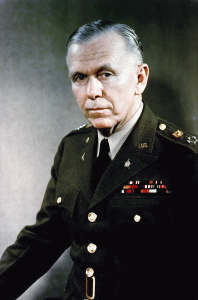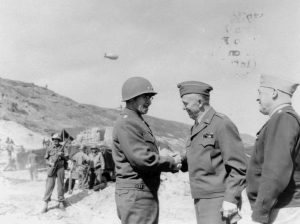By Michael Abels
Local government is experiencing two major societal and political transformations that require local government leaders, elected and appointed, to reassess how they should lead the public they serve. The first is a level of ideological polarization that is crushing our national body politic filtering down to local government. Some elected officials are emulating the national trend by viewing their policy role as aligned with an ideological or partisan faction and reflecting the attitudes of some citizens who view local government as a problem and not as a positive institution for accomplishing the public good.
A disturbing loss of confidence in local government is described in a March 2024 article published through City/County Magazine. Authors Mike Bell and Dr. Maria Church point out that local government is facing an unprecedented public trust crisis. They cite a public survey conducted by the PolCo National Research Center stating that confidence in local government has seen an 8-point drop in the last three years. Bell and Church point out that local government leaders believe that building public trust is the biggest issue they face.
 The second reality places local government managers in an era of policy revolution highlighted by what political strategist and presidential advisor Steve Bannon has described as “deconstructing the administrative state.” The Trump Administration is shedding many federal responsibilities that historically addressed economic assistance, infrastructure development, social, economic, and environmental needs of the public. As this deconstruction becomes a reality, the public will probably turn to local government to provide solutions to the issues and problems that have been abandoned by the federal government.
The second reality places local government managers in an era of policy revolution highlighted by what political strategist and presidential advisor Steve Bannon has described as “deconstructing the administrative state.” The Trump Administration is shedding many federal responsibilities that historically addressed economic assistance, infrastructure development, social, economic, and environmental needs of the public. As this deconstruction becomes a reality, the public will probably turn to local government to provide solutions to the issues and problems that have been abandoned by the federal government.
If the federal government sheds much of its national policy role, public demand for addressing large scale complex problems will shift to the level of government closest to the American people, state and local governments. This shift in responsibility will create new and complicated issues for local leaders. They will be confronted with regional and national problems whose dimensions go far beyond the funding or policy authority of individual units of local government. A consideration for local managers in this new era is how they adapt to the fundamental changes in our historical governing paradigm of federalism? A significant part of this consideration should be managers and elected officials evaluating personal leadership methods that are best suited to the realities of this new era.
 In dealing with the complexities of this changing environment, local leaders might look to transformational leaders who have guided this nation through troubled periods in the past. One such leader is General George Marshall, Army Chief of Staff during World War II, and Secretary of State (and Defense) during the Truman Administration. Though General Marshall was never associated with local government, the complexity of the problems he addressed in the building and deployment of a national army, and then, after the war, formulating and executing a plan to restore the civic and economic health of western Europe are comparable in complexity to the issues local government leaders are confronting with the devolution of federalism.
In dealing with the complexities of this changing environment, local leaders might look to transformational leaders who have guided this nation through troubled periods in the past. One such leader is General George Marshall, Army Chief of Staff during World War II, and Secretary of State (and Defense) during the Truman Administration. Though General Marshall was never associated with local government, the complexity of the problems he addressed in the building and deployment of a national army, and then, after the war, formulating and executing a plan to restore the civic and economic health of western Europe are comparable in complexity to the issues local government leaders are confronting with the devolution of federalism.
Marshall took an army that in 1939 was the seventeenth largest in the world, fielding only 190,000 soldiers, and in five years developed, equipped, and trained an army of 8.5 million soldiers that defeated Germany and Japan. Following the war President Truman appointed Marshall as Secretary of State. In this civilian role Marshall strategically identified the physical and economic devastation of Europe as a threat to long-term world peace and through the State Department Policy Planning Staff (PPS) designed the Economic Recovery Act of 1948. Commonly referred to as the Marshall Plan, the act served as a foundation for the European post war economic revival. It helped develop a system of economic integration that allowed Europe to escape from its historical cycle of internecine warfare until 2022, when Russia invaded Ukraine.
Strategic Leadership
Marshall has been referred to as history’s first global strategist. His habit of forming strategic forecasting teams is very applicable to the challenges facing local government leaders. As Army Chief of Staff and as Secretary of State, Marshall created a staff planning system to forecast the probable future and design programs and policies to address upcoming challenges. He focused on the “big picture” and tasked teams with the responsibility of predicting future trends and formulating recommendations for how to address them. At the State Department, Marshall formed a strategic forecasting team called the Policy Planning Staff (PPS). As described by Dean Acheson, then Under Secretary of State, the mission of PPS was “to look ahead, not into the distant future, but beyond the vision of the operating officers caught in the smoke and crisis of current battle.” As it fulfilled its mission, the PPS was instrumental in identifying the economic crisis in Europe as an existential threat and then designing the Marshall Plan to counter this threat.
Mirroring Marshall’s concept, forming a team charged with identifying, analyzing, and recommending government actions in response to technological, economic, political, and financial trends would allow local government to stay in front of quickly changing events. An example where such a strategic forecasting team would be a critical asset is in our coastal communities adjacent to the intercoastal waterway. Climate change is causing significant residential flooding in many coastal communities. Water levels historically associated with high tide now occur at low tide. So, any rain event creates residential flooding, especially in communities adjacent to bodies of water such as the intercoastal waterway.
A strategic forecasting team would have been an excellent vehicle for local communities to identify the future of climate change and its impact on future community flooding. With that knowledge, local government could have proactively crafted building regulations and other measures to address sea level rise before it caused regular community flooding. Strategic forecasting teams do not replace community-based strategic planning. A community strategic planning process has a start and completion time, involves all segments of the community, and forecasts broad trends, issues, and policy responses for an identified future. Strategic forecasting is an on-going procedure to identify specific new trends or issues that will have an impact on short- and long-term operations, thus requiring an immediate change in operational procedure.
Strategic forecast teams will typically consist of staff members, community stakeholders, and possibly representatives from other governments. Diversifying the membership of these teams will assist organizations in overcoming what Marshall called “localitis,” Marshall defined localitis as when managers or staff in a functional area clearly see their own problems, but they know little of what is happening in other functional areas, other local governments, or organizations within their area of operational impact.
Instill a Sense of “Calm” throughout the Organization
A reality found in the twenty-first century local government is the complexity of problems and issues, the rapid rate of change, and the inability of single governmental jurisdictions to effectively address issues which impact multiple jurisdictions. This reality, coupled with the increasing frustration of citizens with their inability to control the impact of environmental and economic conditions, along with our strong societal political divisions, confronts city/county staff with intractable problems and confrontive public interactions. Staff members increasingly are confronted by a citizenry that views them more as an obstacle instead of an ally. To manage through this environment, managers should instill an environment of “calm” through their example and interactions.
While serving as an interim city manager in 2023, I was told by staff members how critically important it was for managers to instill a sense of environmental calm during daily operations. As citizens become more antagonistic and demanding in their communications, coupled with the compounding of events that require immediate resolution, it is increasingly common for staff to feel besieged. This feeling can lead to poor decision making as well as low staff morale. Creating an environment of “calmness” provides staff with the assurance that they possess management’s confidence and may approach issues looking for and implementing solutions that are rational and in compliance with organizational regulations.
General Marshall provides an excellent example of a manager who created an organizational environment of “calmness.” Although Marshall was known to have a hot temper, he was successful in not allowing anger to be part of his leadership style. This was likely a result of lessons he learned in World War I. In 1920, he was asked to write a summary of lessons learned in the Great War, Marshall wrote, “When conditions are difficult, the command depressed, and everyone seems critical and pessimistic you must be especially cheerful and optimistic.” He exhibited this lesson on the first day of WW II.
On December 7, 1941, Japan attacked the American naval base at Pearl Harbor. The disaster reflected negatively on American preparation, intelligence, and air power, which at that time was a component of the army. The surprise attack cast a negative shadow on Marshall and the American command structure, but he was careful to not exhibit emotions that would discourage his staff. Although in 1944 an army investigative board would find some fault with his pre-Pearl Harbor actions, Marshall understood that his leadership responsibility required him to calmly motivate staff so they could initiate American response to the war which had just been commenced. An excellent evaluation of Marshall’s leadership style was provided by his subordinates and associates. One evaluation staff made about Marshall is that he “spread a sense of authority and calm.” This environment of “calm” created composure in his organization, thereby allowing his subordinates to concentrate on accomplishing their mission instead of responding to emotional fears spawned by the immediate situation.
Empower Staff & Speak Truth to Power
General Marshall was known for recruiting talented people for his staff and then empowering them to do their jobs. Marshall set overall goals and strategy and then expected his subordinates to design programs necessary to carry out those goals and be accountable for results. The management philosophy that guided Marshall’s actions was shown by a statement he made in 1941 to General Dwight D. Eisenhower concerning the War Department. “The department is filled with able men who feel compelled always to bring problems to me for final solution. I must have assistants who will solve their own problems and tell me later what they have done.” Marshall expected his staff to make decisions and not be afraid of disagreeing with him. Because of the multitude and complexity of the problems he was confronting he expected his staff to solve their own problems and then tell him what they had done. Marshall understood that as complexity of issues increases, organizational members must be empowered to expand the organization’s ability to make and implement required decisions. Trust must be at the apex in values that guide organizational behavior.
His philosophy about subordinates solving their own problems and then informing him about their actions parallels another leadership value he espoused; speak truth to power.
In our politically polarized world, managers may find it increasingly career risky to tell their elected officials or the public about the realities of local issues and the actions that the manager sees as necessary to address those issues. The sense of risk is especially true when revenue must be generated to pay for alternatives being considered. As local governing bodies become more aligned with polarized ideological positions, managers are finding that identification of problems and solutions may best be found by allowing them to bubble up from the political body to the manager.
It is often thought that a bottoms up approach to problem identification and solution is necessary for career stability. However, this approach is not supported by Tenet 5 of the ICMA Code of Ethics, which instructs public managers to submit “policy proposals to elected officials; provide them with facts, and professional advice about policy options.” The bottom-up approach is also not supported by examples of historical leaders such as General Marshall.
General John Pershing was Commander of American Forces in Europe during World War I. Marshall was on the staff of the 1st Division, which Pershing was inspecting. Pershing was criticizing the division command, and after berating the staff he started to leave. Marshall physically stopped Pershing and then emphatically told him the facts on the ground as Marshall saw them. Because of his forceful rebuttal, Marshall’s peers thought he had jeopardized his career, but there was no retribution. Instead, Pershing elevated Marshall to his staff and after the war asked him to serve as his aide.
As demonstrated by Marshall’s interaction with Pershing, true leaders value contrasting opinions that are based on facts and rational conclusions. They understand that effective decision-making is founded on diversity and truth, and welcome the courage of those willing to ensure they hear all possible options and potential outcomes.
Build Collaborative Relationships & Systems
 To concentrate resources on national issues such as climate change, infrastructure development, and economic inequality, local leaders will need to establish collaborative systems that involve multiple cities, counties, and non-governmental agencies. These collaborative systems will require more governing authority than the current council of governments, or metropolitan planning organizations. And, if the states can escape the ideological polarization of being “red” or “blue,” the current Council of State Governments can provide a foundation through which a state governing framework could be designed. For these possibilities the history of Marshall’s leadership provides a roadmap.
To concentrate resources on national issues such as climate change, infrastructure development, and economic inequality, local leaders will need to establish collaborative systems that involve multiple cities, counties, and non-governmental agencies. These collaborative systems will require more governing authority than the current council of governments, or metropolitan planning organizations. And, if the states can escape the ideological polarization of being “red” or “blue,” the current Council of State Governments can provide a foundation through which a state governing framework could be designed. For these possibilities the history of Marshall’s leadership provides a roadmap.
Throughout his career Marshall built collaborative systems that extended to stakeholders outside his immediate command jurisdiction. Immediately after America’s entry into World War II, Britain and the United States conducted a joint strategic planning meeting referred to as the Arcadia Conference. At this conference to build the foundation for unified strategic direction, Marshall persuaded Churchill and Roosevelt to integrate allied war planning for all theaters of war. Beyond planning coordination, Marshall won British support for a unified command for the Pacific and Far East. Setting a collaborative foundation at the Arcadia Conference, Marshall was ultimately successful in institutionalizing unified commands in both theaters of war. He understood that while the U.S. had the largest manpower investment in the war, outcome success would require that command be a unified effort shared among Britain and the United States.
Not only did Marshall establish a collaborative unified command, but he also ensured that it worked. Over the nearly four years of U.S. participation in the war, there was approximately fifteen conferences where American, British and sometimes elected and military leaders from other nations met to set war strategy. At the operational level the allied Combined Chiefs of Staff met weekly. By holding regular meetings where mission and goals were decided, the allied collaborative effort was operationalized.
Another excellent example of Marshall’s ability to foster a collaborative environment was while he was serving as the catalyst in the formation of the American Joint Chiefs of Staff. In February 1942 he persuaded President Roosevelt to approve the formation of and then appoint a navy Admiral as Chairman of the Joint Chiefs of Staff. Although Roosevelt suggested that Marshall serve as the chair, Marshall understood that effectiveness of the unified system required power sharing and dedication to mission over the power gratification that could be realized by position. Selfless service and thinking in bold strategic terms were a hallmark of General George Marshall.
The allied unified command Marshall designed is considered to have been a critically important component that facilitated allied victory in World War II. Likewise, his successful suggestion to President Roosevelt to create of the Joint Chiefs of Staff remains to this day a foundation that fosters a unified approach in the American military command system.
A key lesson that Marshall teaches about collaboration is that effective leaders must positively interact with and influence other leaders. This may mean not assuming a command position but allowing other jurisdictions to shoulder the lead for a collaborative project. As Marshall exhibited with the British and in suggesting an admiral as the head of the Joint Chiefs of Staff, success in collaboration sometimes requires conceding a degree of power or position to other leaders who are stakeholders in a collaborative effort.
Another important lesson is that collaborative efforts with multiple jurisdictions require defined missions, clear lines of responsibility, and constant communications. Joint meetings must be held between managers (sometimes elected officials), planners, and operators to ensure set goals are being pursued in the manner that will accomplish the mission.
For leaders of local government, the lesson of collaboration and unified service delivery to ensure effective and efficient governance resonates deeply. As our national population has grown and historically delineated political boundaries have given way to urbanization, managers think of service delivery in terms of service areas and not political jurisdictions. Effective and efficient delivery of services dictates managers view service delivery from a regional perspective. When all stakeholders are considered, effective and efficient service delivery will require the creation of joint bodies that may involve several political jurisdictions as well as private entities.
Selfless Service
Marshall received many accolades throughout his career, including the Nobel Peace Prize. He was Time magazine’s Man of the Year in 1943 and 1948. His career exhibited a model of servant leadership. The narrative for the 1943 Time magazine Man of the Year award states that Marshall recently issued a report to the nation summarizing the United States success to date in the war and nowhere in that report did he use the word “I.” Marshall never elevated his own interests above the mission he was pursuing. An excellent example was his role in the selection of the commander to lead Operation Overlord, the Normandy invasion.

General George C. Marshall receives the Distinguished Service Medal from President Harry S. Truman in 1945. Photo courtesy of the U.S. National Archives (CC BY-SA 4.0)
In the planning for Overlord, it was a consensus that giving Marshall command was the logical thing to do. However, the Joint Chiefs collectively believed he could not be spared from his role as Army Chief of Staff. When Roosevelt asked Marshall what he wanted to do with the Overlord command, Marshall would not answer. In essence, he told Roosevelt to put him where the country needed him most. In announcing his decision Roosevelt said he could “not sleep at night if Marshall was out of the country.” As a result, General Eisenhower became the commander of Overlord. Marshall passed on personal greatness for the larger vision of the country.
One day after Victory in Europe Day, Secretary of War Henry Stimson invited Marshall to his office and in front of several dignitaries said, “You have never thought of yourself. Seldom has a man cast aside such a thing as commanding general of the greatest field army in our history. This decision was made by you for wholly unselfish reasons. But you have made your position as Chief of Staff a greater one.”
Conclusion
The twenty-first century poses unique challenges to local government leaders as our political system experiences revolutionary change. At the federal level, the deconstruction of the “administrative state” is becoming a feature of the Trump Presidency. With the federal government’s diminished role in addressing the common good, it will increasingly fall on individual states and local government to tackle regional and national problems. In a time where transactional leadership seems to be at the vanguard in our national practice, historical leaders such as George Marshall demonstrate how transformational servant leadership centered on collaboration has historically shaped our country. Planning and responding to these new challenges will require a leadership style that emphasizes collaboration, strategic planning, empowerment of teams, and selfless service. In other words, leaders who practice servant leadership.
Managers viewing their role in strategic terms and building collaborative systems to address complex problems will be the foundation for overcoming the multifaceted issues local communities confront. As Marshall so presciently believed, managers must empower staff to independently design and implement solutions to community and organizational issues. This will be unsettling to managers and staff as some actions will fail, and many will be criticized. In this environment a responsibility for leaders will be to instill a sense of organizational calm as problems are addressed, some attempts fail, and staff face a confrontive elected body and citizenry.
When staff empowerment becomes an integral part of our organizational culture, managers and staff will be comfortable with speaking truth to power. Tearing down organizational silos and ensuring that speaking truth to power is standard operating procedure will be a very difficult challenge in many organizational cultures. This will be especially true when our political bodies are polarized because of conflicting ideologies.
On the other hand, if local governments are seen by their stakeholders as possessing the attributes discussed in this article, local leaders may be viewed more sympathetically in the future. When it comes to the ideal of selfless service personified by George Marshall, no higher honor can be imagined.
Michael Abels is a former city manager in Deland, Palm Bay, and Longwood, Florida, and a former city administrator in Defiance, Ohio. He served as a lecturer at the University of Central Florida where he taught undergraduate and graduate courses in public administration and was Director for Undergraduate Public Administration Programs. He also served as an adjunct instructor at Stetson University. He served for 26 years in the U.S. Army and Army Reserves retiring as a Lieutenant Colonel. He is the author of a book on public policy titled “Policy Making in the Public Interest.”



